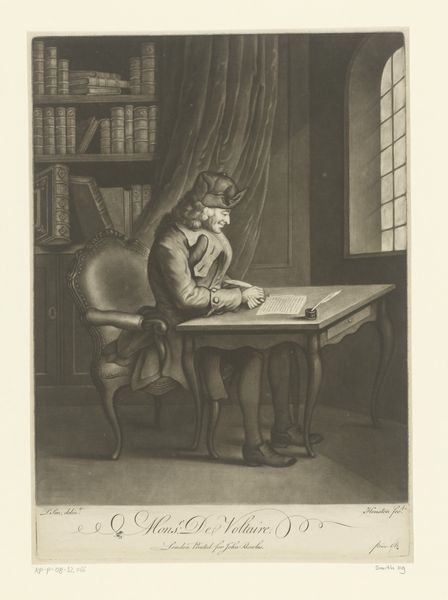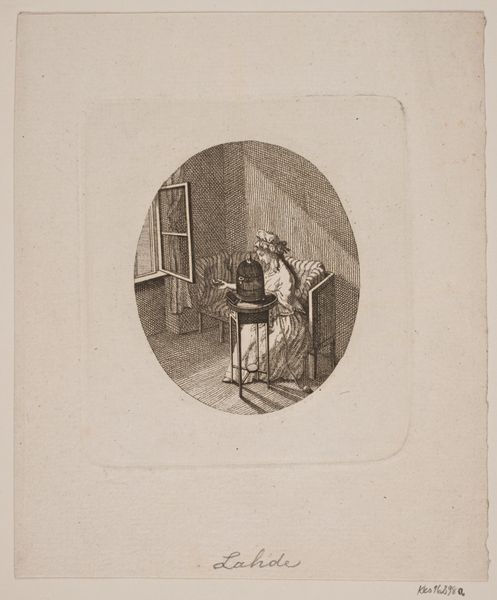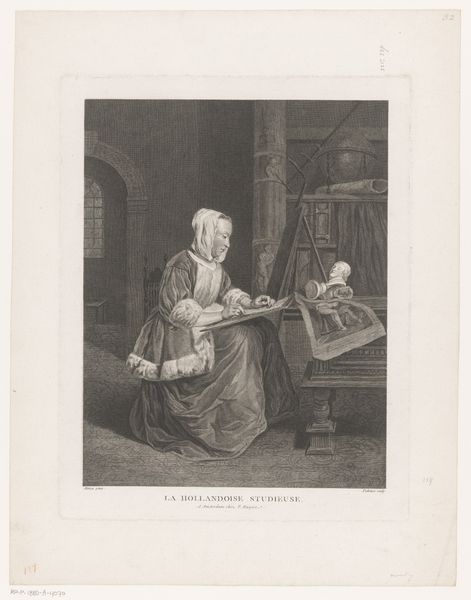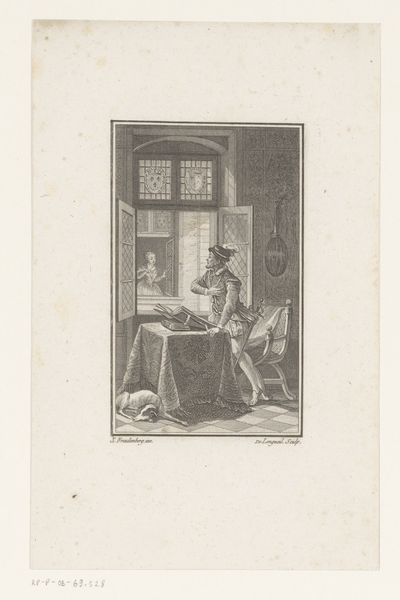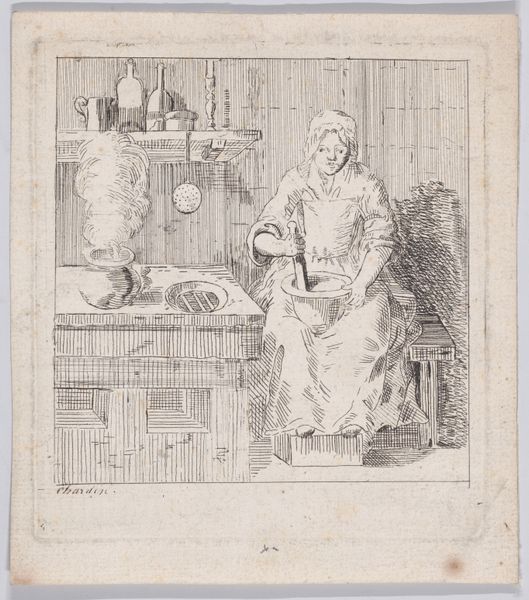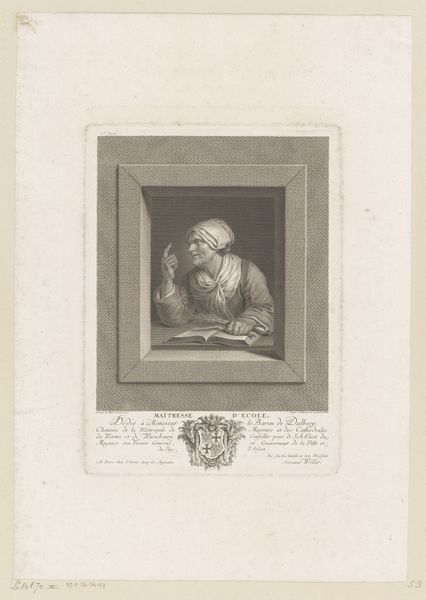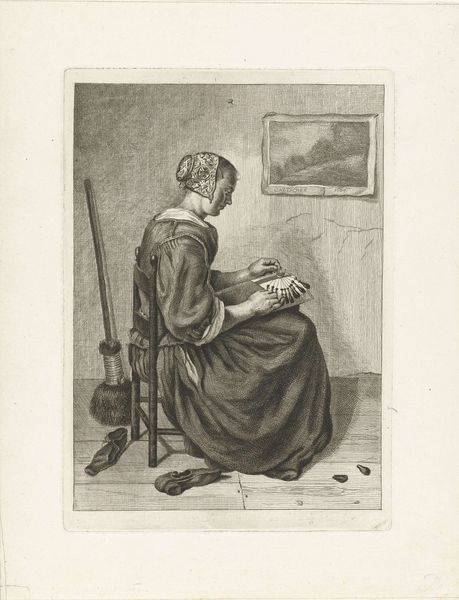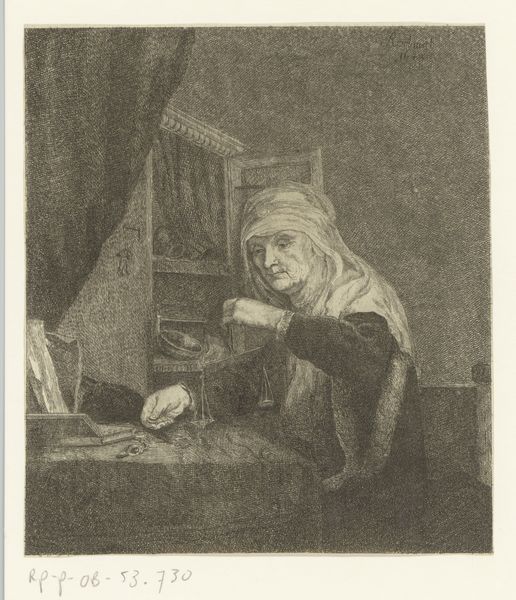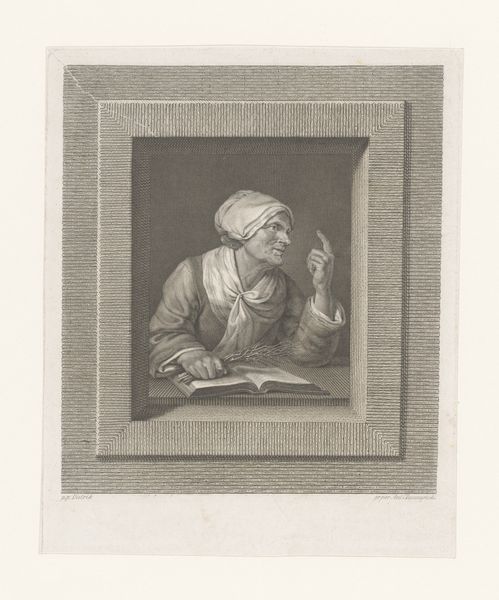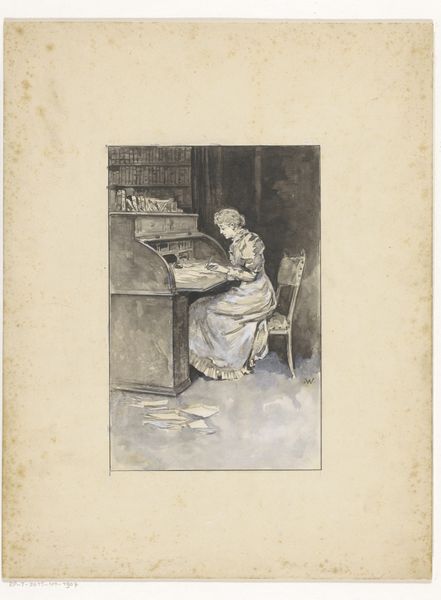
Dimensions: height 108 mm, width 83 mm
Copyright: Rijks Museum: Open Domain
Curator: This print, currently held at the Rijksmuseum, is titled "Vrouw lezend bij kaarslicht," or "Woman Reading by Candlelight." It was created around 1788 by Reinier Vinkeles. The work utilizes engraving and pencil on paper. Editor: It has such an intimate feel. The soft light and the woman’s absorbed expression really draw you in, it makes you want to reach back to those moments alone reading. It looks like an everyday scene, elevated by the romantic treatment of light and shadow. Curator: Vinkeles, of course, was operating in a period that favored such intimacy, but let’s consider the context. Printmaking was experiencing increased demand in the late 18th century. Consider who this imagery served; the rise of literacy among women is interesting here. Do you think prints like these offered models for conduct, reflecting aspirations for learning and contemplation in women's domestic lives? Editor: Absolutely. Think about who could afford such artworks: depictions of women engaged in intellectual pursuits, presented as both natural and desirable, subtly reshaped expectations around women's roles. Was it accessible or was it aimed at domestic bliss for only a select few? Who really got to benefit from seeing themselves in art? Curator: Indeed, but consider, too, the market demands—domestic genre scenes like these provided an interesting, complex mirror to society at the time, especially as such small prints found wide audiences and uses, like illustration in popular novels. They certainly shaped—and, at times, likely constrained—expectations, visually codifying how women were seen, but maybe it's the other way round, that social demand allowed such topics to arise in popularity and art itself simply answered the market. Editor: That’s the historical conundrum isn’t it? It is definitely thought-provoking how artworks like this engage in a push and pull, between influencing and reflecting cultural shifts, and in my view the depiction subtly shifts expectations by making intellectual pursuits respectable and domestic life also part of it. That duality could either give space to women in domestic roles, or limit their options even further. Curator: I hadn't thought about it that way, but it provides more room for us to engage, think, and see the complexities behind this simple print and its role at the time. Editor: Indeed. This piece has me questioning who is being invited into that warm glow of candlelight? Is it meant for everyone, or only some?
Comments
No comments
Be the first to comment and join the conversation on the ultimate creative platform.


